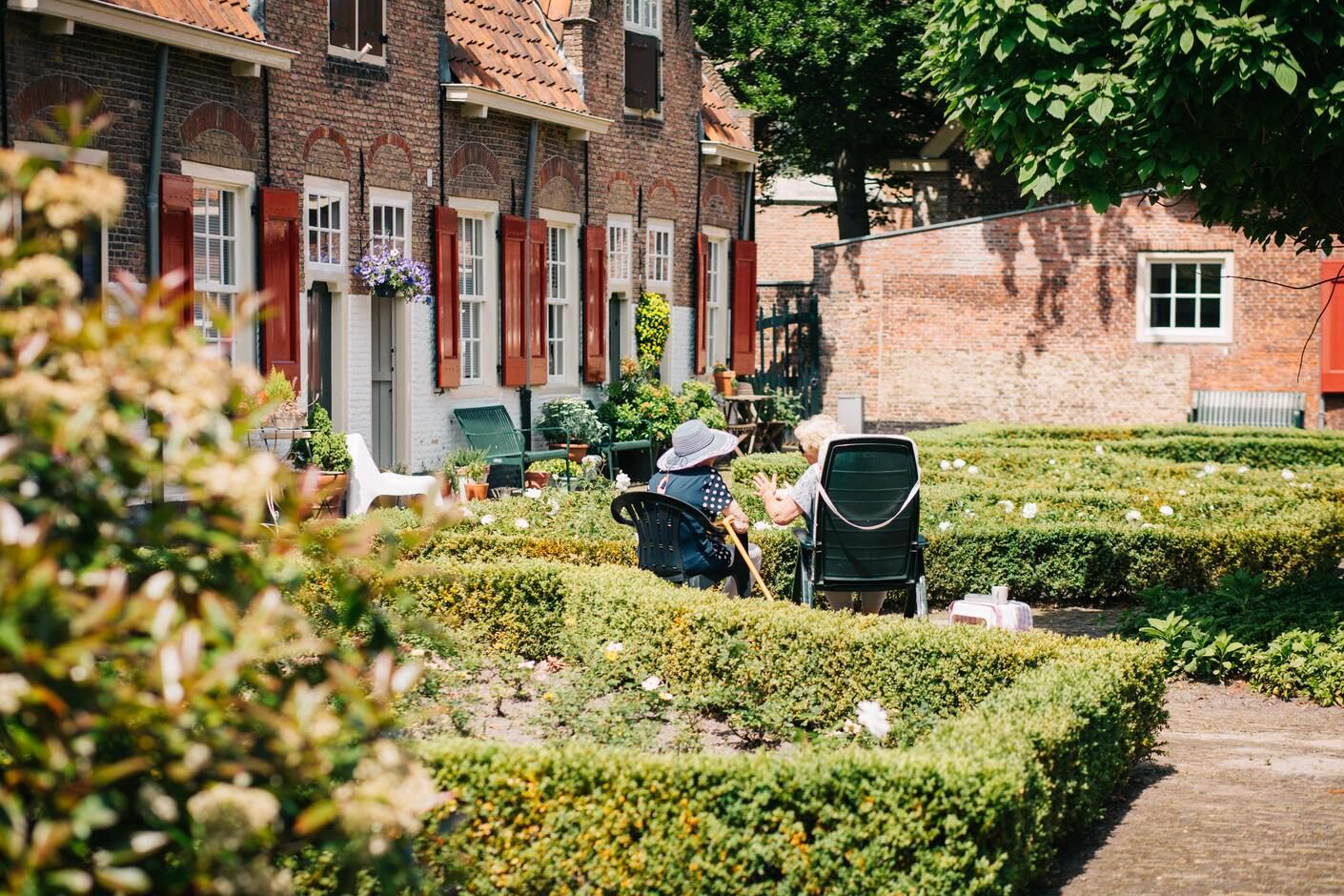What You Need to Know About Assisted Living | Cared Upon
As of 2016, more than 16% of Canadian citizens were 65 years of age or older, representing a 20% increase from 2011 figures. With this substantial demographic shift, there is a greater need for Canadian Seniors to understand their different lifestyle options.
For many seniors, assisted living is an ideal environment to consider. Residents in assisted living facilities are able to enjoy an independent lifestyle while also receiving the daily support they need to overcome any obstacles or limitations.
This article will outline everything you need to know about assisted living, from the services most facilities offer to the questions to ask when you undertake an in-person or virtual visit. You’ll also get insights into the move-in process, as well as what to do if you’re dissatisfied with your care.

What is Assisted Living?
Assisted living facilities can provide housing and a variety of hospitality services for seniors. They also typically arrange for a selection of personal assistance services, which can also be referred to as prescribed services.
Assisted living is meant for older adults who need a supportive environment that caters to their physical or health-related limitations. That said, seniors who enjoy assisted living arrangements maintain an independent lifestyle and can make decisions of their own accord.
Prescribed services supplied by assisted living facilities can include (but are not limited to):
- Medication services
- Daily living activity assistance
- Additional psychiatric or social support
Assisted living specifics will vary depending on your location. In Canada, provincial regulations govern the number and types of prescribed services available to seniors. However, some assisted living facilities or management groups may offer more than two personal assistance services.
Regardless of where they live, seniors in Canada can usually choose from both publicly subsidized and privately operated residences that meet the official definition of assisted living. Consult the Government of Canada’s website for more information on publicly supported options.
What Services Can I Expect?
Just as the types of environments and their ownership specifics can differ from location to location, the services offered by an assisted living facility will also vary depending on your geographic region, as well as your financial means.
Despite this, most assisted living facilities will offer seniors a host of standard benefits, including:
- A private living space with a locking door
- At least two meals a day, one being the individual’s main meal
- Regular housekeeping or cleaning services
- Personal care services, which can encompass dressing, bathing, grooming, and a variety of other tasks that may be deemed necessary by a medical professional
- Access to laundering services or equipment for towels, linens, and personal items
- Heating or air conditioning options to meet basic safety requirements
- An emergency response system that’s active 24/7
While your assisted living arrangement may include some or all of these services, others may also be available to seniors for an extra weekly or monthly price. All candidates for an assisted living opportunity and their families should examine all their options and select the ones that best suit their unique needs and wants.
At the end of the day, you want to ensure that the assisted living facility allows the resident to maintain a happy, healthy lifestyle and doesn’t sacrifice any of their short- and long-term independence.
Where Can I Find a Service?
Before beginning the search for an assisted living arrangement that’s right for them, older adults need to verify that they qualify for facility admittance.
To benefit from assisted living, a senior needs to have the ability to make autonomous decisions that enable them to function safely in any potential environment. In some cases, assisted living facilities will allow a spouse to live with them and, if the senior is unable, make decisions on their behalf.
Those interested in assisted living must also:
- Require both hospitality and personal care services
- Be avoiding significant risk by leaving their current living situation
- Agree to pay the facility’s pre-determined client rate, as well as any charges incurred for additional services, programs, and other items not included in that initial rate
To find an assisted living facility that’s right for you, visit the Cared Upon website and use the search function to look up available options in your desired location.
What Should I Look Out For When I Visit?
When you’ve completed the initial search stage and are ready to narrow down your assisted living facility options, it’s vital to ensure you have all the information you need to make an informed decision.
Before you consider visiting or signing on with a particular residence, ask for the following:
- The facility or company brochure (many places have a digital version available on their website)
- A copy of a typical resident’s contract. Make sure this includes the terms and conditions, as well as a cost breakdown
- Details on the facility’s waiting list procedure. If they already have an active list, find out how long your potential wait period will be
If those preliminary steps yield positive results, the next step is scheduling an in-person or virtual visit to the retirement facility. Ideally, seniors should visit the facility with a family member or a close friend.
When visiting an assisted living facility in-person or virtually, do so with a family member or close friend. During the visit, keep the following questions in mind:
General Questions
- Does the facility make a good first impression? Why or why not?
- Are the manager and staff friendly and welcoming?
- Are the unit and the communal areas clean and well-maintained?
Care and Accessibility
- Does the facility meet my current health needs?
- Can the home support me if I need additional assistance due to illness or a disability?
- What kind of care is available if I need medication assistance?
Living Spaces
- Do I share my living space with anyone else?
- How clean and well-maintained is my unit?
- Is there access to an outdoor area, like a garden? What about lounge areas?
Meals
- What kind of meals are served daily?
- How often do meals change?
- Do you cater to special dietary requirements? What about cultural preferences?
Visitors
- What is your visitor policy?
- Are there visitor restrictions such as the number of visitors or time they can visit?
- Can visitors stay overnight?
What Should I Bring When Moving In?
Once you’ve settled on an assisted living facility, the final stage of the transition process is moving in.
This part of any senior’s journey can be nerve-wracking for both them and their loved ones. Once you’ve decided on a facility, be sure everyone involved with the transition communicates clearly and frequently with another, including the facility’s management team.
During the packing process, use this checklist as a guide:
- Clothing: Pack enough for two weeks that will last in between laundry days. Include clothes for day-to-day living, social and fitness activities, and other specialized events. These items encompass comfortable tops and bottoms, coats for both mild and cold days, sleepwear, slippers, indoor shoes, outdoor shoes, robes, underwear, socks and/or tights, activewear, hats, scarves, and gloves.
- Personal hygiene: Take all the products that will make you feel more at home in your new space. These can include prescription medicine, supplements, soap, shampoo and conditioner, makeup, perfume or cologne, toothbrush, toothpaste, deodorant, body lotion, moisturizer, shaving products, and more.
- Bedding: Bringing your own bedding can make you feel more at ease, especially if you have a specific personal preference. For example, you may want to bring your own blanket, comforter, throw, pillow, and pillowcase.
- Electronics: Bring all the essentials like a smartphone, tablet, computer, TV and remote, camera, headphones, and the chargers and cords for all the items.
- Bedroom furniture: The care home may provide these items, but double-check with management to see if you can bring your own desk, drawers, nightstand, bookshelf, or lamp.
- Personal items: items like framed photos, photo albums, books, movies, puzzles, games, and other decorative items can help ease the move.
Labeling all items not provided by the retirement home is highly recommended, just in case they get lost, mixed up with communal items, or if you have cognitive limitations.
What Can I Do If I’m Unhappy?
If you’re unhappy with your assisted living arrangement, you may want to file a complaint with your residence. Typically, complaints fall into two categories: urgent and non-urgent.
The former category is reserved for anything that could put a senior in harm’s way or a state of neglect. Non-urgent complaints include any subpar aspect of the care you’re receiving that’s non-threatening, such as meal, activity, or personal care quality.
Complaints in either category are handled differently. Urgent complaints are usually taken up by the Ministry of Health or another administrative or regulatory body. For non-urgent complaints, it’s recommended that you contact facility management directly to address your concerns.
Different provinces may also have a dedicated support line for assisted living-related issues. Contact your local officials to find out if there’s one available in your region.
Recap
Assisted living is an attractive option for seniors who may not be comfortable or safe in their current living environment but also don’t want to shortchange their current level of independence.
Thankfully, there are plenty of public and private options across Canada that can cater to a senior’s specific needs, wants, and physical or health-related concerns. However, not all assisted living facilities are created equal, so make sure you do your due diligence to find out what your options are and which care provider is best for you.
While transitioning to assisted living can be a tumultuous time in any senior’s life, it also brings with it a host of benefits, all of which add up to an improved quality of life.


